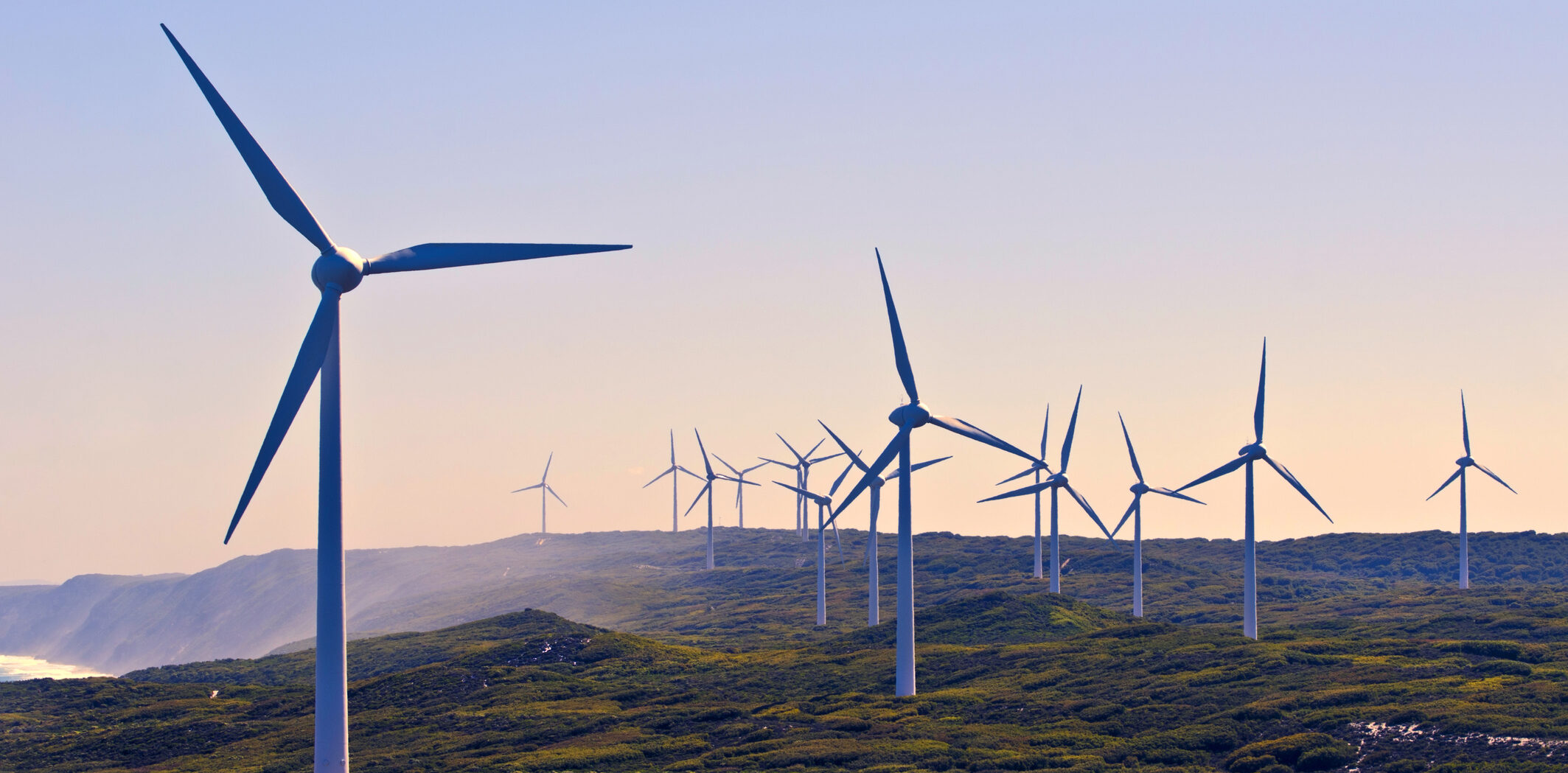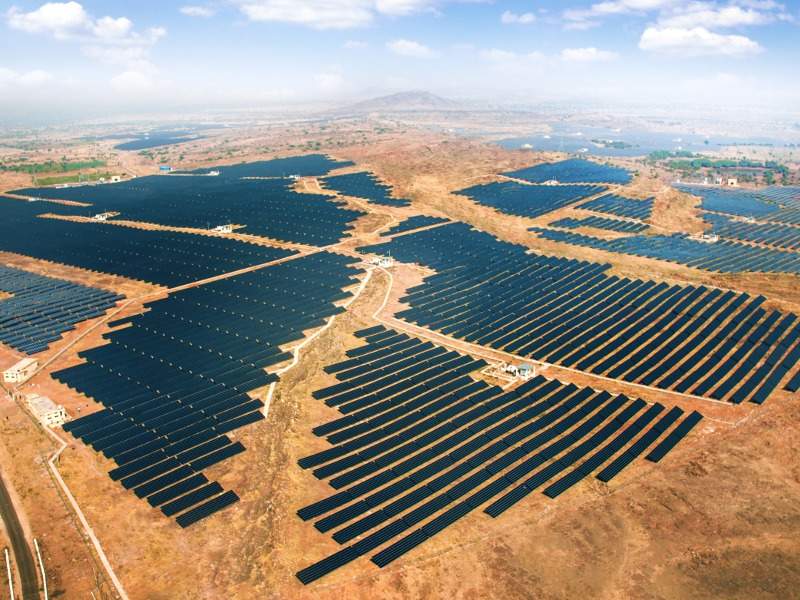Table of Contents

Introduction: Renewable energy in India
Renewable energy in India has seen significant growth and development in recent years, driven by various factors including government policies, technological advancements, and increasing awareness of environmental issues.
The Indian government has implemented various initiatives and policies to promote renewable energy adoption. The National Solar Mission launched in 2010 aims to achieve 100 GW of solar power capacity by 2022. Similarly, the National Wind Mission and other programs promote wind energy. Additionally, schemes such as the Renewable Purchase Obligation (RPO) mandate utilities to source a certain percentage of their energy from renewables.
Ministry of New and Renewable Energy (MNRE)
- The Ministry of New and Renewable Energy (MNRE) is the nodal Ministry of the Government of India for all matters relating to new and renewable energy.
- In 1982, the Department of Non- Convenonal Energy Sources (DNES) was created in the Ministry of Energy to look after all aspects of new and renewable energy.
- The Department was upgraded into a separate Ministry of Non-Convenonal Energy Sources (MNES) in 1992 and re-named Ministry of New and Renewable Energy (MNRE) in 2006.
- The Ministry of New and Renewable Energy (MNRE) is a ministry under the Government of India responsible for research & development, intellectual property protection, international cooperation, promotion and coordination in renewable energy sources such as wind power, small hydro, biogas, and solar power.
Mission
- Alternate Fuels Development: Developing fuels like hydrogen, bio-fuels, and synthetic fuels to reduce reliance on oil imports.
- Increased Clean Power Share: Utilizing renewable sources such as wind, hydro, solar, geothermal, bio, and tidal power to supplement electricity generation from fossil fuels.
- Affordable Energy Solutions: Aim for cost-competitive, convenient, safe, and reliable energy supply options to ensure affordable energy for everyone.
- Energy Equity: Targeting per-capita energy consumption to match the global average level by 2050.
Important Points: Renewable energy in India
- Energy Consumption: India is the 3rd largest energy-consuming country in the world.
- Installed Capacity: As of as of Feb 2024, India has a total installed capacity of 190.97 GW (including large Hydro and nuclear).
- Wind power: 45.15 GW
- Solar Power: 75.57 GW
- Biomass/Co-generation: 10.2 GW
- Small Hydro Power: 4.99 GW
- Waste To Energy: 0.58 GW
- Large Hydro: 46.92 GW
- REN21 Global Status Report: India ranks 4th globally in Renewable Energy Installed Capacity (including Large Hydro and Nuclear), 4th in Wind Power capacity & 4th in Solar Power capacity (as per REN21 Renewables 2022 Global Status Report).
- Target: India has set a target to
- reduce the carbon intensity of the nation’s economy by less than 45% by the end of the decade,
- achieve 50 percent cumulative electric power installed by 2030 from renewables,
- achieve net-zero carbon emissions by 2070,
- The country has set an enhanced target of 500 GW the COP26.
- India aims to produce five million tonnes of green hydrogen by 2030.
- FDI in Renewable Energy: Up to 100% FDI is allowed under the automatic route for renewable energy generation and distribution projects.
| Installed capacity for Renewables | |
|---|---|
| Wind power | 43.7 GW |
| Solar Power | 70.1 GW |
| Biomass/Co-generation | 10.2 GW |
| Small Hydro Power | 4.94 GW |
| Waste To Energy | 0.55 GW |
| Large Hydro | 46.85 GW |
Nuclear Power
- Nuclear power is the 5th-largest source of electricity in India after coal, gas, hydroelectricity, and wind power.
- Nuclear energy:
- Nuclear energy is released from the nucleus of atoms, consisting of protons and neutrons.
- Nuclear energy is generated through two processes: fission, where the atomic nucleus splits into several parts, and fusion, where nuclei fuse together.
- Current global electricity production from nuclear energy predominantly is through nuclear fission.
- Technology to generate electricity from Fusion is currently in the research and development stage.
| Power Station | State |
|---|---|
| Kaiga | Karnataka |
| Kakrapar | Gujarat |
| Kudankulam | Tamil Nadu |
| Kalpakkam | Tamil Nadu |
| Narora | Uttar Pradesh |
| Rawatbhata | Rajasthan |
| Tarapur | Maharashtra |
Wind power
- Global Rank: India ranks 4th in Wind Power Capacity globally.
- The target for off-shore wind power capacity is 30 GW by 2030.
| Capacity | Total installed capacity of 41.93 GW (as of 31st December 2022) |
| Offshore Wind Turbine Research and Test Centre | Location – Dhanushkodi, Tamil Nadu Testing cum research facility |
| FDI in Wind sector | Up to 100% under the automatic route |
Wind Energy Park
| Kutch Wind Farm (Gujarat Hybrid Renewable Energy Park) | Kutch |
| Muppandal Wind Farm | Kanyakumari |
| Jaisalmer Wind Park | Jaisalmer |
Offshore Wind Power project in India
- Target: India has a target of offshore wind farm installation off Gujarat and Tamil Nadu coasts by 2030.
- Maritime Areas of India:
- India has a coastline of 7600 km, including its islands. Two main Maritime Areas of India where offshore wind farms can be built are –
- Indian territorial waters, which generally extend up to 12 nautical miles (nm) from the baseline and,
- Exclusive Economic Zone (EEZ), beyond the 12 nm limit and up to 200 nm.
- Under the United Nations Convention on the Law of the Sea, India holds sovereign rights within its Maritime Areas, which extend up to 200 nautical miles from the coastline.
- Within this zone, India can engage in activities like fishing and harnessing energy from ocean currents and wind, with exclusive authority over the construction, operation, and regulation of related installations.
- India has a coastline of 7600 km, including its islands. Two main Maritime Areas of India where offshore wind farms can be built are –
- Nautical mile: Nautical miles are used for measuring long distances traveled over water where the curvature of the Earth becomes a factor in accurate measurement. A nautical mile is slightly longer than a land mile, equivalent to 1.1508 miles.
- Collaboration with Danish Energy Agency:
- India and Denmark established the Centre of Excellence (CoE) for Offshore Wind and Renewable Energy, a collaborative venture between the Indian Ministry of New and Renewable Energy (MNRE) and the Danish Energy Agency (DEA).
- The CoE aims to facilitate and expedite India’s offshore wind strategy by fostering collaboration among industry, state agencies, and civil society.
Solar Power
- List of Largest Solar Power Plants in India

- National Solar Mission: The Government set a target of 100 GW of installed solar power capacity in the country by 2022.
- Installed Capacity: As of Feb 2024, a cumulative solar power of 75.57 GW has been installed in the country.
- Potential: India’s solar energy potential is estimated to be 748 GWp as estimated by the National Institute of Solar Energy (NISE).
- Total Solar Power Capacity in India: As on 30-06-2023, solar projects of capacity of 70.10 GW have been commissioned in the country. The capacity of 70.10 GW includes 57.22 GW from ground-mounted solar projects, 10.37 GW from rooftop solar projects, and 2.51 GW from off-grid solar projects.
- Global Rank: India has achieved 5th rank in the world in solar power deployment.
- Solar City: Sanchi (Madhya Pradesh) has become India’s first ‘solar city‘.
Biomass/Co-generation
- Installed Capacity: As of 31.12.2022, the cumulative installed capacity of biomass power and co-generation projects stood at about 10.2 GW.
- Potential: As per the MNRE Annual Report (2018-19), the potential for power generation from agricultural and agro-industrial residue is estimated to be 18,000 MW, and for bagasse cogeneration in sugar mills, it is 8,000 MW. Thus, the total estimated biomass power in the country is 26,000 MW.
- Biomass is an essential RE (Renewable Energy) source because it is widely available, carbon-neutral, and capable of providing firm energy and generating significant employment in rural areas.
- Biomass is the most commonly used energy source for several small-scale industries and fuel for independent power plants.
- Biomass materials used for power generation include sugarcane Bagasse and other non bagasse materials like rice husk, straw, cotton stalk, coconut shells, soybean husk, de-oiled cakes, coffee waste, jute waste, groundnut shells, sawdust, etc.
- The state with the maximum installed capacity is Maharashtra (2500MW).
Small Hydro Power
- Definition of Small Hydro: In India, Hydro Power plants with a capacity of 25 MW or below are classified as Small Hydro.
